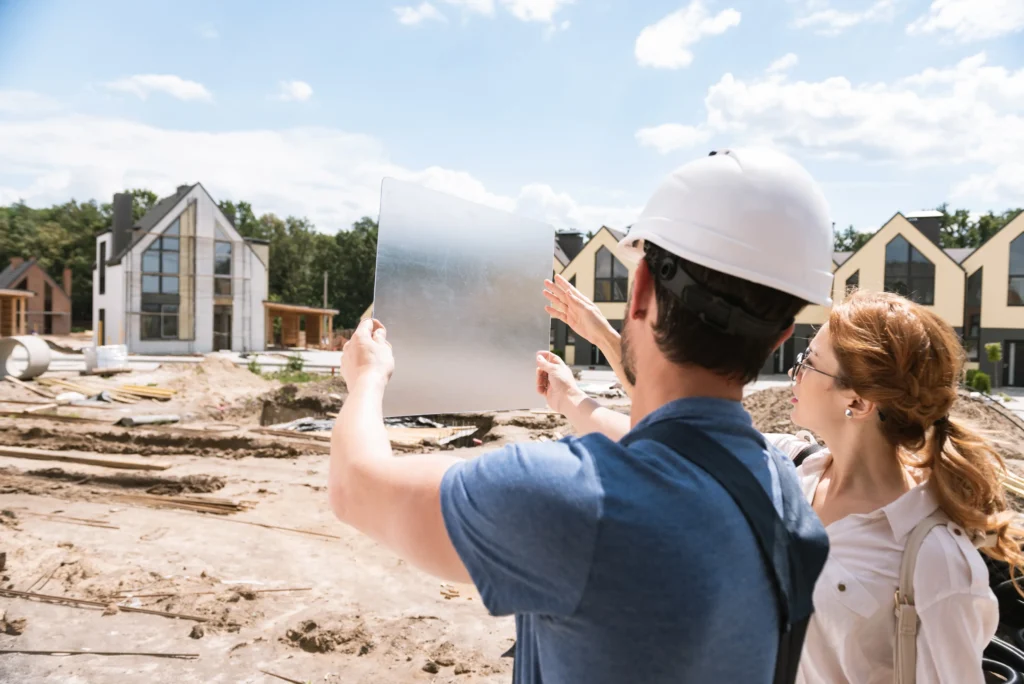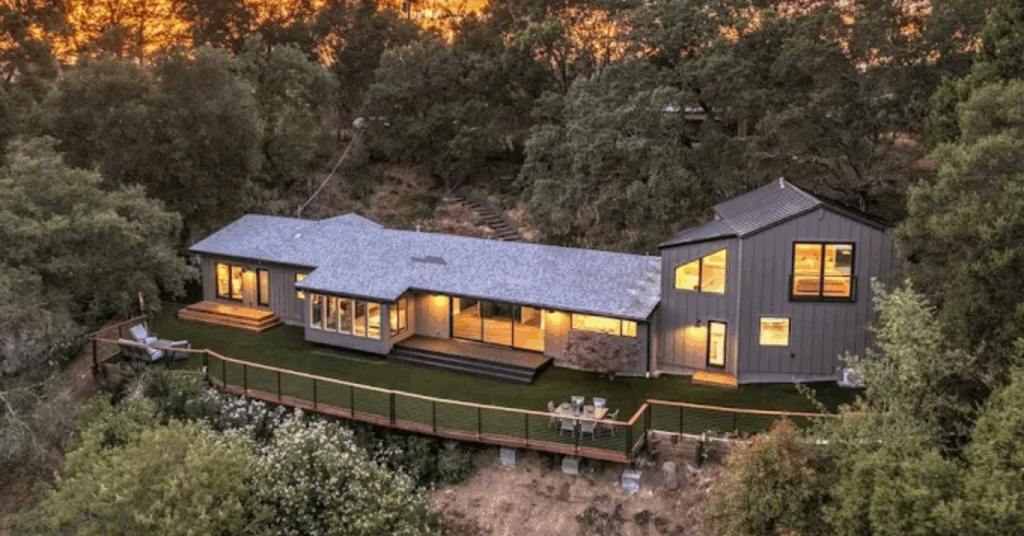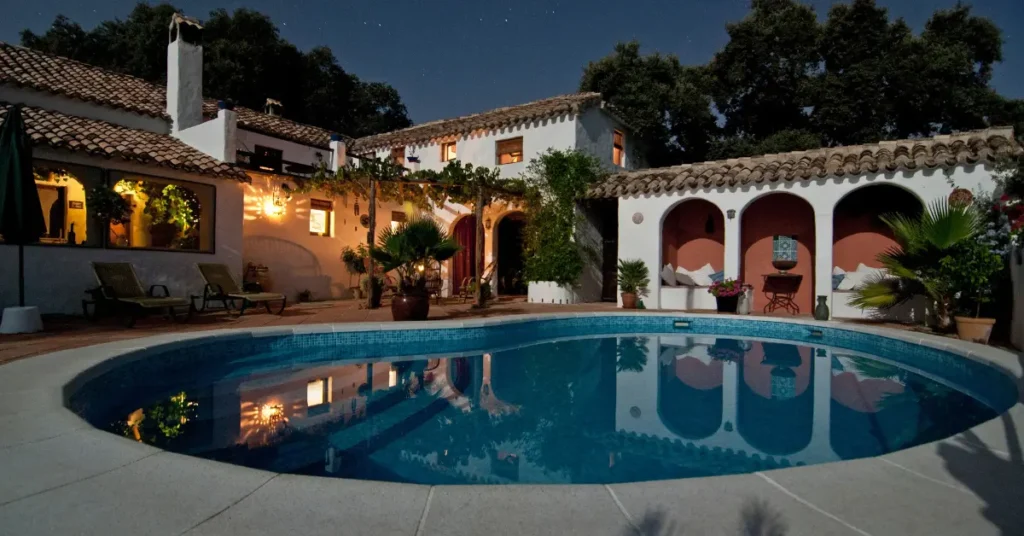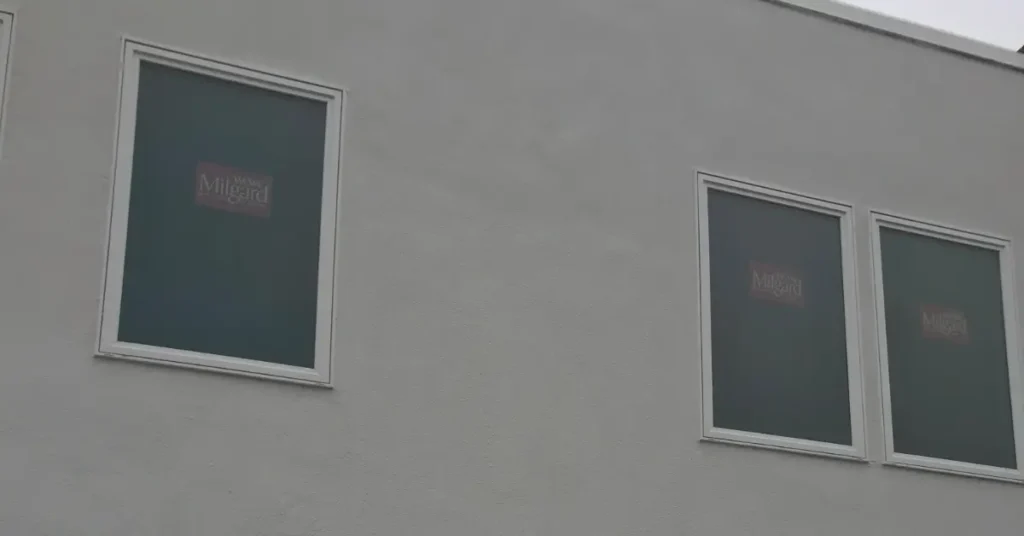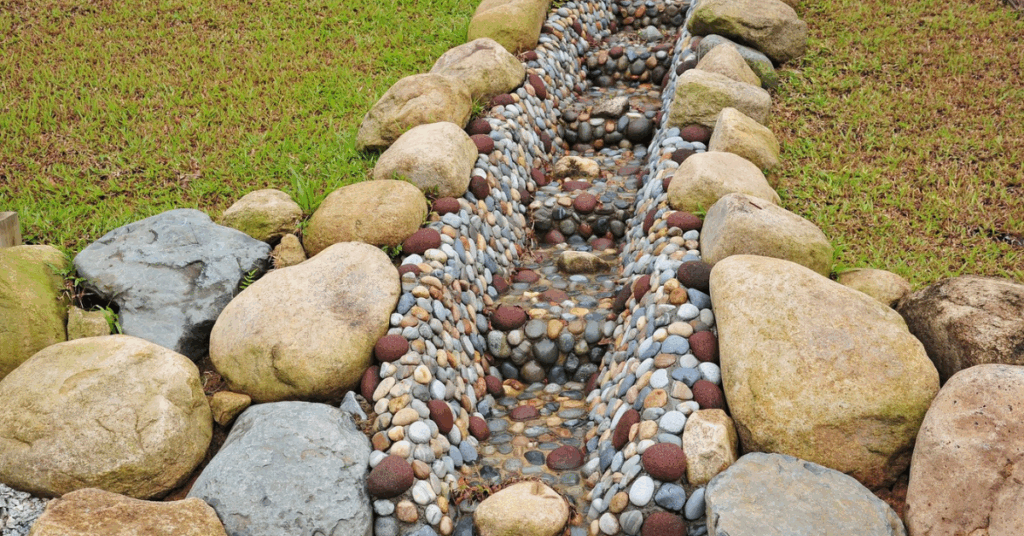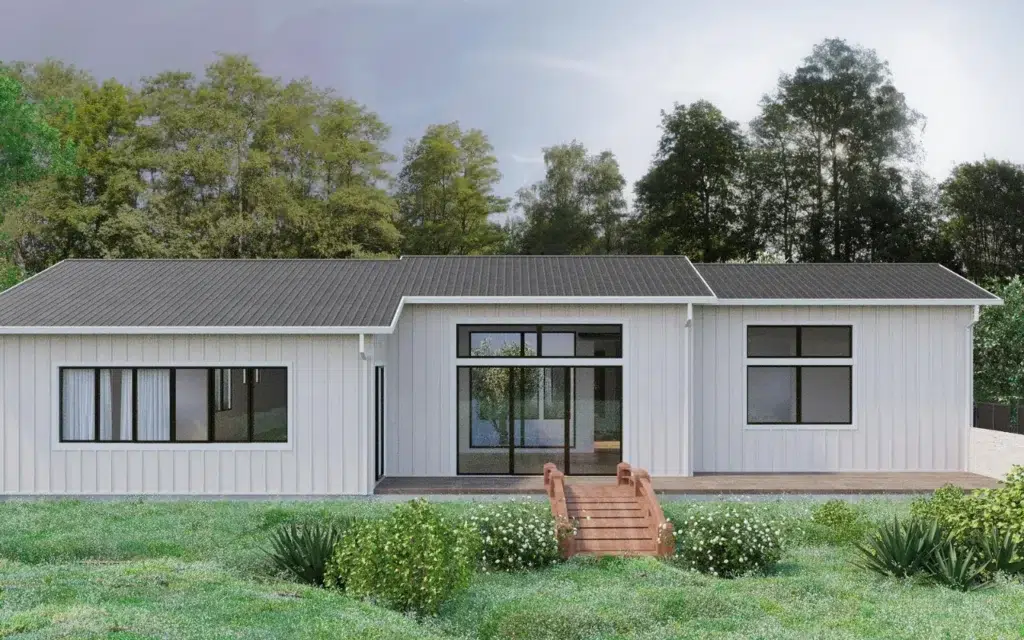Are you growing weary of those old, drafty windows in your charming brick home? Does the idea of giving your home a modern facelift while simultaneously enhancing its energy efficiency intrigue you? If so, you’re in the right place! In our comprehensive guide to window replacement for brick houses, we cover every facet you need to understand.
This guide provides in-depth insights into the process of selecting the perfect windows that align with your unique aesthetic and practical needs. Additionally, we delve into the nuts and bolts of the installation process to help you understand what to expect and how to ensure the smoothest transition possible. We’ll even throw in some valuable pointers on how to maximize your cost savings during this home improvement venture.
Our objective is to arm you with knowledge and practical tips that will make this project feel less daunting and more exciting. So, whether you’re an avid DIY enthusiast eager to get your hands dirty or you prefer the expertise of professionals to handle the task, we’ve got you covered. It’s time to reimagine your beautiful brick home’s potential with sparkling new windows that offer both form and function. Prepare for a transformative journey to elevate your home’s appeal to new heights!
Alternative Window Replacement
If you’re considering giving your brick house a makeover by replacing its windows, you’re probably doing so for various reasons. You may be hoping to boost the aesthetic appeal of your home, or you might be troubled by escalating energy bills. Perhaps, the thought of window replacement has lingered in your mind for some time, but the perceived complexity of such a task for a brick house has held you back. Spoiler alert: it doesn’t have to be a daunting task!
Window replacement could be the answer you’re seeking, but weighing your options carefully is essential. Why? Because the cost of full-frame window replacement can be a substantial investment. Thus, you’ll want to ensure it’s the best course of action for you. More cost-effective alternatives to window replacement might better fit your needs and budget.
In this post, we aim to be your guiding light in this decision-making process. We will explore some crucial questions, including:
- How can you determine if your home truly needs new windows?
- Which option is superior: full-frame window replacement or retrofitting?
- Is replacing windows in a brick house as challenging as it seems?
- How much can you expect to shell out when replacing windows in a brick house?
By the end of this post, we hope to provide you with the clarity and confidence you need to make the best decision for your home and wallet. So, let’s dive in!
How can you determine if your home truly needs new windows?
Determining whether your home truly needs new windows can be a challenging task. However, there are several telltale signs that you can look out for. Here are some indicators that might suggest it’s time to consider window replacement:
- Drafts: If you feel a breeze coming in when your windows are closed, this suggests they’re not sealing correctly. Over time, windows can become warped or damaged, leading to drafts that can affect your home’s comfort and energy efficiency.
- Difficulty in Operation: Windows should open and close smoothly. Suppose you need help to perform these simple actions or to lock your windows. In that case, it indicates that their structural integrity might be compromised.
- Rising Energy Bills: If you’ve noticed a spike in your energy bills, it could be due to your windows. Windows that don’t provide sufficient insulation force your heating and cooling systems to work harder, leading to increased energy consumption.
- Physical Decay: Visible signs of decay, like chipped paint, rot, or mold growth on the window frames, indicate that your windows need attention. These issues affect the performance and lifespan of your windows.
- Condensation Between Panes: If you notice condensation forming between window panes, it’s a clear sign of a seal failure. This can lead to further issues like reduced thermal efficiency and potential mold growth.
- Outside Noise: Windows should effectively buffer outside noise. If your home has become noisier, it may indicate that your windows’ soundproofing qualities are declining.
- Outdated Design: Aesthetics matter. If your windows are outdated or don’t match your home’s style, consider a replacement. Newer windows can enhance your home’s curb appeal and may increase its market value.
If your windows exhibit any of these signs, consider replacing them. Remember, though the upfront cost might seem significant, new windows can improve your home’s comfort, energy efficiency, and value in the long run.
Which option is superior: full-frame window replacement or retrofitting?
Determining which is superior – full-frame window replacement or retrofitting – often depends on several factors, including your budget, the current condition of your windows, and your long-term goals for your home.
Full-Frame Window Replacement involves removing the entire window, including the frame and trim, and replacing it with a new one. This option is generally more expensive but can be necessary if your windows are severely damaged or if you want to change the size or style of the windows. Full-frame replacement allows for a complete update, significantly enhancing your home’s curb appeal and energy efficiency. It also enables you to address any hidden structural issues around the window frame, ensuring a long-lasting solution.
Retrofitting, also known as window insert or pocket replacement, involves fitting a new window into the existing frame. This method is typically less expensive and intrusive as it leaves the original structure, trim, and siding in place. However, retrofitting is only viable if your window frames are in good condition. It may not be suitable if the frame is damage or rot or if you desire a different window size or style.
In conclusion, neither option is inherently superior; it depends on your unique situation and needs. If your window frames are still in good shape, retrofitting can be a cost-effective solution to upgrade your windows. However, a full-frame window replacement could be worth the investment if you’re dealing with structural issues or want a complete refresh. Consulting with a window installation professional can provide more personalized advice based on the specifics of your home and project.
Guide When Replacing Windows in a Brick House
Replacing a window in a brick house might seem daunting due to the precision and expertise required. While professionals are best equipped to handle such tasks, you can take on this project if you’re an adept DIY enthusiast with the right tools. Below is a more detailed, step-by-step guide to help you understand the process:
- Measure the Existing Window: Before replacing a window, you need to know the exact size of the current window. To do this, measure your existing window’s width, height, and depth. Ensure you take these measurements from different points, as windows can occasionally be uneven. Averages of these measurements provide the most accurate dimensions.
- Procure the New Window: With the measurements at hand, it’s time to buy your new window. It’s advised to order a window slightly smaller (1/2″) than your measurements to give room for minor adjustments during installation.
- Extract the Old Window: This stage is critical and requires careful handling to avoid damage to the surrounding brickwork. Start by removing the window sashes (the parts that hold the glass in place). Following that, proceed to remove the frame. It might be necessary to slice the structure into smaller sections to make removal easier.
- Clean the Window Opening: After successfully removing the old window, clean out the opening meticulously. Get rid of any debris, hardened caulking, or insulation that could obstruct the installation of the new window.
- Dry Fit the New Window: Before permanently securing the new window, do a ‘dry fit’ to ensure it aligns properly with the opening. This trial fitting allows for any necessary adjustments to be made before the final installation.
- Install the New Window: Once you’ve confirmed that the window fits appropriately, apply a bead of caulk on the inside of the exterior brick molding (the decorative strip around the window). Position the window carefully, ensuring its level using shims (thin pieces of material used to fill gaps). Secure the window by driving screws through the side jambs into the surrounding frame.
- Insulate and Seal the Window: Insulate gaps with expandable foam insulation after the window is firmly installed. Trim the excess insulation once it dries. Apply an exterior-grade silicone caulk around the window’s perimeter to ensure a watertight seal.
- Fit the Trim: The final step is to fit the interior trim and any associated hardware, giving your window a finished and polished look.
This general guide provides an overview of replacing windows in a brick house. The specifics may vary based on the type and design of the windows you install. If you’re uncertain at any stage, feel free to seek professional help. A poor installation can cause problems like drafts, water leaks, or structural issues in the future, and it’s essential to get it right the first time.
How much can you expect to shell out when replacing windows in a brick house?
The cost of replacing windows in a brick house can vary widely depending on various factors. These include the type of windows you choose, their size, your region, and whether you opt to do the work yourself or hire a professional.
Generally speaking, a single window replacement can range from $300 to $1,000 per window for the materials and installation. Remember, high-end windows will be on the higher end of this range, and complex structures in brick homes can also increase the price.
Remember that while the initial cost might seem steep, upgrading to energy-efficient windows can save you money in the long term by reducing your heating and cooling bills.
Furthermore, this is an investment in your home. New windows can enhance the look and feel of your property, possibly increasing its overall market value.
As with any significant home improvement project, getting estimates from a few different contractors is best to ensure you’re getting a fair price. Always make sure any contractor you hire is licensed, insured, and comes with good recommendations.
Lastly, while the DIY route can save you on labor costs, window replacement is a complex task, especially in brick homes. Any mistakes can lead to long-term issues, potentially costing more to rectify.
Is It More Economical to Replace All Windows Simultaneously?
When answering this query, several angles should be considered. If the windows in your house show signs of aging, even if they don’t require urgent replacement, it could be highly beneficial to replace them all simultaneously. This approach has several advantages:
- Convenience: Working with a single contractor for all windows ensures consistency in the workmanship and results.
- Bulk Purchase Savings: Buying all the materials at once could lead to some discounts, lowering the overall cost.
- Simplified Scheduling: With all work happening in a single phase, it’s easier to coordinate schedules and budgets for the entire project.
Factors Influencing the Cost of Window Replacement
Several other aspects can affect the overall cost of window replacement. These include:
- Size: The size of the windows matters. More oversized windows, typically found in living rooms, tend to cost more due to the extensive installation required. Also, if you wish to alter the existing window’s size, additional construction costs will be involved.
- Window Type: The cost varies depending on the type of window. Common types like single- and double-hung windows, range from $150 to $650. Other types such as fixed or picture windows, casement, and sliding windows, can cost from under $100 to $1,000. Specialty windows like egress, bay, and bow windows can go up to $2,500 each.
- Frame Material: The material of the window frame plays a crucial role in cost determination. Vinyl frames, the most popular choice, cost between $250 and $600 to install. Wood windows range between $600 and $2,000 each. Other materials include fiberglass ($600 to $900), aluminum ($400 to $1,200), and composite ($300 to $1,100). Here’s a comparison between wood and vinyl windows:
- Wood Windows: They cost more than vinyl windows but have a longer lifespan and provide better insulation. Wood windows are heavier, leading to slightly higher labor costs. They offer more customization options as they can be painted or stained to match your home’s aesthetics.
- Vinyl Windows: They are cheaper than wood windows and have a lower installation cost. Vinyl windows also require less maintenance.
- Glass Type: Investing in well-insulated glass can lead to long-term savings in lower utility bills. Windows are rated by a “U-factor”, which measures their ability to prevent heat loss.
- Accessibility: Replacing windows on the 2nd or 3rd floor can be more complex and expensive due to the required additional equipment, like scaffolding and ladders.
- Age of Home: Generally, the age of your home doesn’t directly impact window replacement cost. However, additional costs may be incurred if any unforeseen damage is discovered during the replacement process in older homes.
All these factors are essential to consider when budgeting for window replacement in your home.
How Rhino Builders Can Help Your Window Replacement Services
If the process of window replacement seems overwhelming, don’t worry – Rhino Builders is here to assist. We’re experienced in handling all kinds of window replacements, including those in brick houses. Our team of experts will guide you through the entire process, from selecting the right windows for your home to ensuring a flawless installation.
At Rhino Builders, we understand that each home is unique and requires a personalized approach. We’re committed to delivering exceptional results that enhance the aesthetic appeal of your home and its comfort and efficiency. So, whether you’re an enthusiastic DIY homeowner or prefer to leave it to the professionals, reach out to Rhino Builders when ready to embark on your window replacement journey. We ensure your experience is smooth, hassle-free, and fulfilling.

